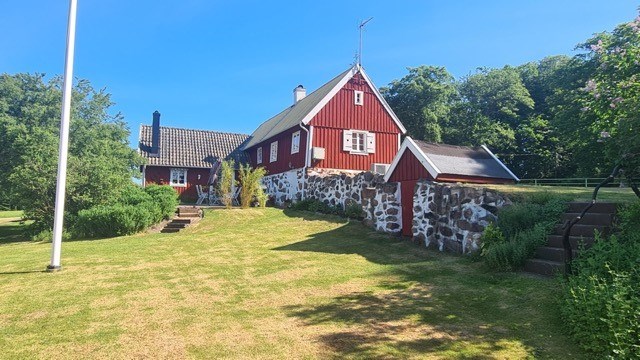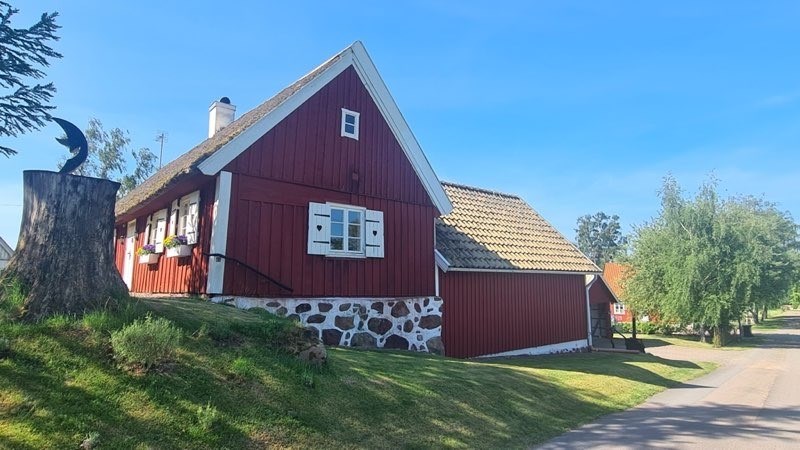Detta inlägg post publicerades ursprungligen på denna sida this site ;
In a darkened room, a fractured symphony of rattles, hums and warbles bounces off the walls – like an orchestra tuning up in some parallel universe. But there’s not a musician in sight.
If you look closely there is a small fragment of a performer. Albeit one without a pulse.
In the centre of the room, visitors hover around a raised plinth, craning to glimpse the brains behind the operation. Under a magnifying lens sit two white blobs, like a tiny pair of jellyfish. Together, they form the lab-grown “mini-brain” of the late US musician Alvin Lucier – composing a posthumous score in real time.

Lucier was a pioneer of experimental music who died in 2021. But here in the Art Gallery of Western Australia he has been resurrected with cutting-edge neuroscience.
“When you look down into that central plinth, you’re crossing a threshold,” says Nathan Thompson, an artist and a creator of the project, titled Revivification. “You’re peering down into the abyss and you’re looking at something that’s alive – just not in the same way as you.”

Revivification is the work of a self-described “four-headed monster”, a tight-knit team of scientists and artists who have spent decades pushing the boundaries of biological art – namely Thompson and his fellow artists Guy Ben-Ary and Matt Gingold, alongside a neuroscientist, Stuart Hodgetts.
Lucier was the perfect collaborator. In 1965 the composer became the first artist to use brainwaves to generate live sound in his seminal work Music for Solo Performer. Longtime fans of his work, the Revivification team started brainstorming ideas with him back in 2018. But it wasn’t until 2020, then aged 89 and suffering from Parkinson’s disease, that the composer agreed to donate his blood to Revivification.
First, his white blood cells were reprogrammed into stem cells. Then, led by Hodgetts, the team transformed the cells into cerebral organoids – clusters of neurons that mimic the human brain.
During the pandemic, the team met with Lucier over Zoom every fortnight until he died in 2021. As his health declined, he spoke in whispered fragments, often relayed by his assistant, but he remained a guiding force.
“We were like art students learning from the professor,” Thompson says. “He had this ability to cut through anything superfluous and get to the core of what he envisioned.”
Ben-Ary adds: “But it was very much a collaboration. We came with 25 years experience in the biological arts … For [Lucier], it was very science fiction.”
In early conversations, Lucier suggested ideas as fantastical as sending sound waves to the moon. But the musician and the team ultimately homed in on a performance that echoes his lifelong fascination with neural signals, acoustics and space.


Both sculptural and sonic, the installation features 20 large parabolic brass plates which curve out from the walls like golden satellite dishes. Hidden behind each plate is a transducer (like a speaker) and a mallet, which respond to neural signals from the mini-brain – filling the space with a kind of breathless, disembodied soundtrack.
The Revivification team used custom technology to bring the work to life. Lucier’s organoids were grown on to a fine mesh of 64 electrodes, developed with a German bioengineer, allowing neural signals to be captured from multiple layers – much like a developing brain. Gingold then adapted an open-source platform to interpret this activity and generate sound, turning the artificial brain into a live, responsive performer.
Importantly, Lucier’s organoids don’t just produce sound – they also receive it. Microphones in the gallery pick up ambient noise, including human voices and the resonant tones of the plates, and that audio data is converted into electrical signals and fed back into the brain. “We’re very interested to know whether the organoid is going to change or learn over time,” Ben-Ary says.

The project raises timely ethical and philosophical questions about biology, artificial intelligence and authorship. But, according to the team, Revivification is art first and science second.
“Where does creativity lie?” Thompson ponders. “As cultural workers, we are really interested in these big questions. But this work is not giving the answers. Instead we want to invite conversations … Can creativity exist outside of the human body? And is it even ethical to do so?”
But the team is hopeful that the extensive neural data they’ve collected might help future scientific inquiry. “When we work with these big artistic questions, we can push the limits of what’s possible,” Gingold says. “Because science hasn’t answered this. They’re not even at the point of asking the question.”
Looking ahead, the team hopes Revivification will live on – literally and creatively. Ben-Ary says it’s his dream for Lucier’s surrogate performer to compose “new memories, new stories” indefinitely. There are also whispers of more extreme futures: adapting the system for remote, inhospitable environments such as Antarctica, or even launching it into orbit.
For now, Lucier’s genius lingers in that darkened room in Perth, composing in real time through a brain that lives on without him.
“When I told Lucier’s daughter Amanda about the project, she laughed,” Ben-Ary says. “She thought, this is so my dad. Just before he died he arranged for himself to play for ever. He just can’t go. He needs to keep playing.”
-
Revivification is at the Art Gallery of Western Australia until 3 August
The Guardian Tech RSS
https://www.theguardian.com/artanddesign/2025/apr/09/alvin-lucier-dead-composer-making-music-ai-artificial-intelligence-brain

